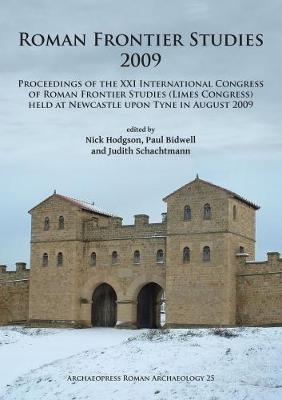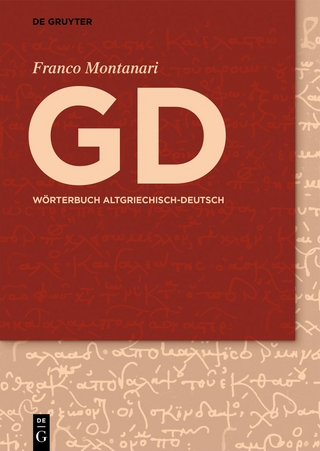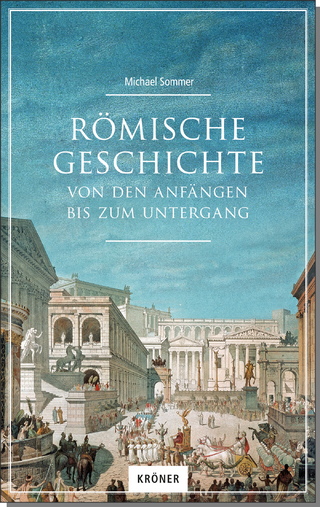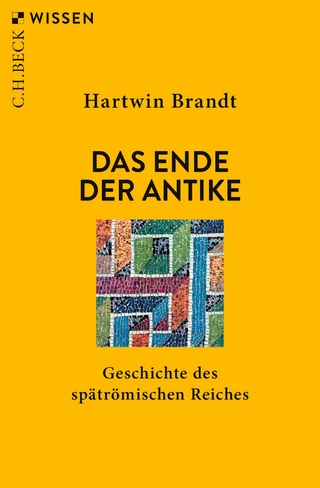
Roman Frontier Studies 2009
Archaeopress Archaeology (Verlag)
978-1-78491-590-2 (ISBN)
The XXI International Congress of Roman Frontier studies was hosted by Tyne & Wear Archives & Museums in Newcastle upon Tyne (Great Britain) in 2009, 60 years after the first Limeskongress organised in that city by Eric Birley in 1949. Sixty years on, delegates could reflect on how the Congress has grown and changed over six decades and could be heartened at the presence of so many young scholars and a variety of topics and avenues of research into the army and frontiers of the Roman empire that would not have been considered in 1949. Papers are organised into the same thematic sessions as in the actual conference: Women and Families in the Roman Army; Roman Roads; The Roman Frontier in Wales; The Eastern and North African Frontiers; Smaller Structures: towers and fortlets; Recognising Differences in Lifestyles through Material Culture; Barbaricum; Britain; Roman Frontiers in a Globalised World; Civil Settlements; Death and Commemoration; Danubian and Balkan Provinces; Camps; Logistics and Supply; The Germanies and Augustan and Tiberian Germany; Spain; Frontier Fleets. This wide-ranging collection of papers enriches the study of Roman frontiers in all their aspects.
Nick Hodgson is Archaeological Projects Manager for Tyne & Wear Archives & Museums and has excavated for many years at South Shields, Wallsend and other sites on the northern frontier of Roman Britain. He has published widely on Iron Age and Roman archaeology and is the author of Hadrian's Wall: Archaeology and History at the limit of Rome's empire (2017); Paul Bidwell was Head of Archaeology at Tyne & Wear Archives & Museums for almost three decades until his retirement in 2013. He has published numerous monographs, excavation reports and articles and is the author of Roman Forts in Britain (1997 and 2007). He is now an independent researcher and archaeological and heritage consultant; Judith Schachtmann obtained an MA at Humboldt University, Berlin, with a comparison of German, British and Irish archaeological world heritage sites. For two years she was a researcher in the DFG (German Research Foundation) and is currently working on a PhD thesis on archaeological museums and exhibitions in Saxony during the national socialist era.
Foreword (David J Breeze); Introduction by the Editors; Women and Families in the Roman Army (Session organisers: Carol van Driel-Murray, Martina Meyr, Colin Wells): Women, the Military and patria potestas in Roman Britain (Lindsay Allason-Jones); Beyond von Petrikovits - artefact distribution and socio-spatial practices in the Roman military (Penelope Allison); Some thoughts about the archaeological legacy of soldiers' families in the countryside of the civitas Batavorum (Harry van Enckevort); The Families of Roman Auxiliary Soldiers in the Military Diplomas (Elizabeth M. Greene); British families in the Roman army: living on the fringes of the Roman world (Tatiana Ivleva); Women and Children in Military Inscriptions from northern Germania Superior (Michael J. Klein); The Empress and her Relationship to the Roman Army (Kai M. Topfer); Women and children at the Saxon Shore fort of Oudenburg (Belgium) (S. Vanhoutte and A. Verbrugge); Roman Roads: Decem Pagi at the end of antiquity and the fate of the Roman road system in eastern Gaul (Joachim Henning, Michael McCormick and Thomas Fischer); The planning of Roman Dere Street, Hadrian's Wall, and the Antonine Wall in Scotland (John Poulter); Some notes on the development of the military road network of the Roman Empire (Zsolt Visy); The Roman Frontier in Wales (Session organisers: Barry Burnham, Jeffrey Davies): Rewriting The Roman Frontier in Wales: an introduction (Barry C. Burnham and Jeffrey L. Davies); Recent work on the site of the legionary fortress at Caerleon (Peter Guest and Tim Young); Roman Roads in Wales (R. J. Silvester); The Cadw-grant-aided `Roman Fort Environs Project' - the contribution of geophysics (David Hopewell); Roman Frontiers in Wales: 40 years on (Jeffrey L. Davies); The military `vici' of Wales - progress since Jarrett 1969 (Barry C. Burnham); The Eastern and North African Frontiers (Session organisers: James Crow, Eberhard Sauer): Transformation patterns of Roman Forts in the Limes Arabicus from Severan to Tetrarchic and Justinianic periods (Ignacio Arce); Recent Research on the Anastasian Wall in Thrace and late antique linear barriers around the Black Sea (James Crow); New Research on the Roman Frontier in Arabia (S. Thomas Parker); The Archaeology of Sasanian Frontier Troops: Recent Fieldwork on Frontier Walls in Northern Iran (Hamid Omrani Rekavandi, Eberhard Sauer, Tony Wilkinson and Jebrael Nokandeh); Soldiers or Tribesmen: who guarded the frontiers of late Roman Africa? (Alan Rushworth); Roman-Armenian Borders, Part I: The Upper Euphrates Frontier (Everett L. Wheeler); Smaller Structures: towers and fortlets (Session organisers: Bill Hanson, Matt Symonds); Bauliche und funktionale Gliederung des Obergermanisch-Raetischen Limes anhand der Turmgrundrisse (Thomas Becker); A Roman road station on the Pannonian limes (Szilvia Biro); River frontiers or fortified corridors? (Erik Graafstaliii); A Battle of Wills: Manoeuvre Warfare and the Roman defence of the North Yorkshire Coast in the late C4th (A McCluskey); The Castelinho dos Mouros (Alcoutim) and the `casas fuertes' of southern Portugal (Thomas Schierl, Felix Teichner, Gerald Grabherr, Alexandra Gradim); Smaller structures on Hadrian's coastal frontier (Matthew F. A. Symonds); Roman Towers (David Woolliscroft); Recognising Differences in Lifestyles through Material Culture (Session organisers: Stefanie Hoss, Sonja Jilek, Eckhard Deschler-Erb): La ceramique " militaire " dans le Nord de la Gaule de la Conquete au debut du IIe siecle apres J.-C.: Facies et particularites (Cyrille Chaidron, Raphael Clotuche et Sonja Willems); Auxiliaries and their forts: expression of identity? (Julia Chorus); Military versus civilian and legionary versus auxiliary: the case of Germania Inferior (Stefanie Hoss); Die zivile Nutzung militarischen Baumaterials - Kontexte und Interpretation (Thomas Schmidts); Barbaricum (Session organiser: Thomas Grane): Barbaricum: an introduction to the session (Thomas Grane); An imported bronze casket from the Przeworsk culture cemetery in Lachmirowice, distr. Inowroclaw (Katarzyna Czarnecka); Multifunctional coins - a study of Roman coins from the Zealandic isles in eastern Denmark (Mads Drevs Dyhrfjeld-Johnsen); Medical instruments, tools and excavation locations - `The reason why...' (Annette Frolich); Patterns in Cross-frontier Relations (Marjan C. Galestin); Bemerkungen zu den Formen des Zustroms der Importguter in das germanische Siedlungsmilieu wahrend der Romischen Kaiserzeit im mittleren Donauraum (Balazs Komoroczyiv); Romische Bronzegefassgarnituren Romischer und germanischer Fundkontext im Vergleich und deren jeweilige Aussage: Wo, wann, wie, warum, wer, fur was? Sudskandinavien und die romischen Provinzen (Ulla Lund Hansen); The C3rd AD Romano-Germanic Battlefield at Harzhorn near Kalefeld, Landkreis Northeim (Michael Meyer, Felix Bittmann, Michael Geschwinde, Henning Hassmann, Petra Lonne and Gunther Moosbauer); Hacksilber inside and outside the late Roman world: a view from Traprain Law (Kenneth Painter and Fraser Hunter); Why are the South Scandinavian weapon deposits relevant for limes research? An update of research progress (Xenia Pauli Jensen); Corpus der romischen Funde im europaischen Barbaricum - Ruckblick und Ausblick (Hans-Ulrich Voss und Claus-Michael Hussen); Britain: Hadrian's Wall and the Mommsen thesis (David J Breeze); Continuing the search for an `Antonine Gap' on Hadrian's Wall (R. J. Brickstock); A late Roman military command in Britain reinstated (Roger White); A new Roman fort at Staxton in the Vale of Pickering, Yorkshire, England (Pete Wilson); Roman Frontiers in a Globalised World (Session organisers: Richard Hingley, Divya Tolia-Kelly, Rob Witcher): Does History repeat itself?- The Roman Frontiers from the viewpoint of a European Archaeologist of today (Eduard Nemeth); The attraction of opposites: Owen Lattimore and studies of the Inner Asian frontiers of China (Naomi Standen); Changing Presents Interpret the Past, AD 1500-2010: The Frontier on the Limes and the Upper Danube (Peter S. Wells); Civil Settlements (Session organisers: Edward Dabrowa, Pete Wilson): Military Colonization in the Near East and Mesopotamia under the Severi (Edward Dabrowav); The Canabae Legionis of Carnuntum: Modelling a Roman Urban Landscape from systematic, non-destructive Prospection and Excavation (Christian Gugl, Michael Doneus and Nives Doneus); Neues vom Vicus der Saalburg (Cecilia Moneta); Viminacium - Roman City and Legionary Camp: Topography, Evolution and Urbanism (Nemanja Mrdic and Bebina Milovanovic); The Veterans' Colony Aequum, the Legionary Fortress Tilurium and the Sinj Field.Re-examining Old Problems (Mirjana Sanader); Death and Commemoration (Session organiser: Maureen Carroll); Some aspects of death, ritual and commemoration in the Lower Rhineland (Germany) (Clive Bridger); Dress, self and identity in Roman funerary commemoration on the Rhine and Danube frontiers (Maureen Carroll); The Funerary Commemoration of Veterans and Soldiers at the Colony of Augusta Emerita (Merida, Spain), 25 BC - AD 235 (Jonathan Edmondson); The Roman Cemetery at Pottenbrunn.Structural Analysis of a rural necropolis (Eva Hoelbling); The Roman cemetery at Mannersdorf am Leithagebirge, Lower Austria: The late antique inhumations as an information source of the population of the C4th and C5th (Rene Ployer); Ein neue Grabinschrift fur einen Soldaten der legio VI Victrix in Novaesium/Neuss (Marcus Reuter); The Decoration of some Early Imperial Tombs of Primi Pili (Kai M. Topfer); Danubian and Balkan Provinces: Stories and Facts about the Function of Dacia's South-eastern Frontier: Forty Years of Research (I. Bogdan Cataniciu); Maximinus Thrax in Novae (Piotr Dyczek and Jerzy Kolendo); A contribution to the study of the Roman Limes in the Croatian Danube region (Mato Ilkic and Daska Osonjacki); Overlapping Phases in the defensive systems of the Roman forts and the archaeological experience: the case of Roman Dacia (Dan Isacvi); Detail eines romischen Kellers aus dem Vicus von Aquincum - Vizivaros (Budapest) (Katalin H. Kerdo); Vindobona fortress - barracks, fabrica and intervallum (Martin Mosser); The Late Roman Principia in Tarsatica, part of Claustra Alpium Iuliarum (Josip Visnjic and Luka Bekic); Romuliana - Gamzigrad in der Provinz Dacia ripensis.Kaiserpalast und Militarstation (Gerda von Bulow); The Army in the Hinterland - a case study of Pons Aeni/Pfaffenhofen (Meike B Weber); The Scythian Section of Notitia Dignitatum: A Structural and Chronological Analysis (Mihail Zahariade); Camps (Session organiser: Rebecca Jones): What is a Roman Camp? (Rebecca H. Jones); The Marching Camp at Deer's Den, Aberdeenshire: a precis of the excavations (Murray Cook); Romische Feldlager aus der Zeit der Markomannenkriege in der Slowakei (Jan Rajtar und Claus-Michael Hussen); GIS application in Roman military invasion survey within barbarian territories during the Marcomannic wars - introduction into problems and perspectives (Balazs Komoroczy and Marek Vlach); The Roman Republican Battlefield at Pedrosillo (Casas de Reina, Badajoz, Spain): New Research (2007) (Angel Morillo, German Rodriguez Martin and Esperanza Martin Hernandez); Remains of the Roman baggage train at the battlefield of Kalkriese (Achim Rost); The function of temporary camps along Hadrian's Wall (Humphrey Welfare); The battlefield of Kalkriese: The rampart at the site `Oberesch' during and after the battle (Susanne Wilbers-Rost); Logistics and Supply (Session organisers: Bill Hanson, Valerie Maxfield): Voorburg-Arentsburg: a Roman harbour with a British connection in the hinterland of the Limes (Mark Driessenvii); The grain supply for the Roman army in Hispania during the Republican period (Javier Salido Dominguez); Die romischen Steinbruchinschriften des Brohltals (Markus Scholz - unter Mitarbeit von Holger Schaaff); A sustainable frontier? Timber supply for the Roman army in the Lower-Rhine delta, AD 40-150 (Pauline van Rijn); The Germanies and Augustan and Tiberian Germany (Session organiser: Sebastian Sommer); Lahnau - Waldgirmes.Die Ausgrabungen 2007 - 2009 (Armin Becker); Neue Luftbilder zu den Militarlagern und den canabae legionum von Vetera castra I (Xanten) (Norbert Hanel und Baoquan Song); The Augustan legionary camp on the Hunerberg in Nijmegen (NL) revised.New information and re-interpretation of old data of the defence system (Elly N. A. Heirbaut); New thoughts on the so-called temple of Mars in the legionary camp of Vindonissa (Andrew Lawrence); Iupiter im Brunnen - Neues zur siedlungsgeschichtlichen Entwicklung im Nordvicus von Heidelberg (Petra Mayer-Reppert); The Roman military presence in the Rhine delta in the pre-Flavian period (Marinus Polak); Quarries on the Raetian Limes, the height and construction of the wall (C. Sebastian Sommer); Spain: The Roman fort in El Real (Campo de Criptana, Ciudad Real, Spain) (Antxoka Martinez Velasco); The Cantabrian Wars (26-25 BC campaigns): contesting old interpretations (Angel Morillo); Frontier Fleets (Session organisers: Boris Rankov, Jorit Wintjes); Antiqua ... Arte Cilix (Lucan., Phars.4.449) (Sinisa Bilic-Dujmusic); Ultro Citroque Discurrere - Operational Patterns and Tactics of Late Roman Frontier Fleets on Rivers (Florian Himmlerviii); Project Exploratio Danubiae - New Insights into Troop Transport on the River Danube in the Late Roman Period (Heinrich Konen); The Frontier Fleets: What Were They and What Did They Do? (Boris Rankov); The Northern Fleets in the Principate (Christoph Rummel); Did the Romans have a fleet on the Red Sea? (Denis B. Saddington); The Ghost Fleet of Seleucia Pieria (Jorit Wintjes); Miscellaneous Contributions: Wells and Ritual Deposition at the Newstead Roman Military Complex (Simon Clarke); A Cost-Control Model for Imperial Frontiers? (Raphael M. J. Isserlin); Der Soldat und die Gotter - wie privat war Religion? (Nina Willburger)
| Erscheinungsdatum | 12.08.2017 |
|---|---|
| Reihe/Serie | Archaeopress Roman Archaeology ; 25 |
| Zusatzinfo | Illustrated throughout with 49 plates in colour |
| Verlagsort | Oxford |
| Sprache | englisch |
| Maße | 205 x 290 mm |
| Themenwelt | Geisteswissenschaften ► Archäologie |
| Geschichte ► Allgemeine Geschichte ► Altertum / Antike | |
| ISBN-10 | 1-78491-590-4 / 1784915904 |
| ISBN-13 | 978-1-78491-590-2 / 9781784915902 |
| Zustand | Neuware |
| Haben Sie eine Frage zum Produkt? |
aus dem Bereich


